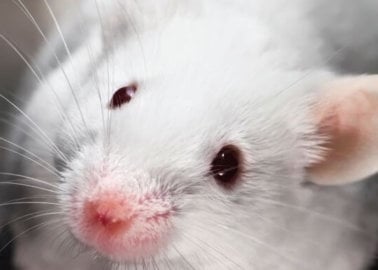The Scientists Who Are Determined to Stop Chemical Tests on Animals
 It’s the largest animal testing programme in the world, but many people have never heard of it.
It’s the largest animal testing programme in the world, but many people have never heard of it.
We’re talking about REACH – otherwise known as the Registration, Evaluation, Authorisation and Restriction of Chemicals in the European Union. The law states that animals must be used in tests only as a last resort, but since it came into effect in 2007, it’s estimated that a staggering 800,000 animals have already been poisoned and killed as part of the programme, including rabbits, mice, rats, guinea pigs and fish. Millions more could be subjected to the same fate in the coming years, and worse, many could be used in cruel tests when humane non-animal alternatives exist!
Fortunately, PETA and our international affiliates have progressive scientists on the case working day and night to do everything that they can to ensure that doesn’t happen. The PETA International Science Consortium Ltd. is working behind the scenes to help save animals from these painful and frightening experiments. This month, for example, two scientists working as part of the Science Consortium published an in-depth article in Chemical Watch, a major publication for chemistry industry professionals, outlining how to replace cruel tests on animals with reliable and humane non-animal methods.

For example, instead of dripping chemicals into rabbits’ eyes or rubbing them into their sensitive skin, companies can often use in vitro (test tube) experiments or computer modelling to determine the toxicity of chemicals.
By providing the most up-to-date information about alternatives to animal testing, the Science Consortium is pushing the chemical industry forward – away from archaic and unethical experiments on sentient beings and towards a future in which new technologies are used to save both animal and human lives.



